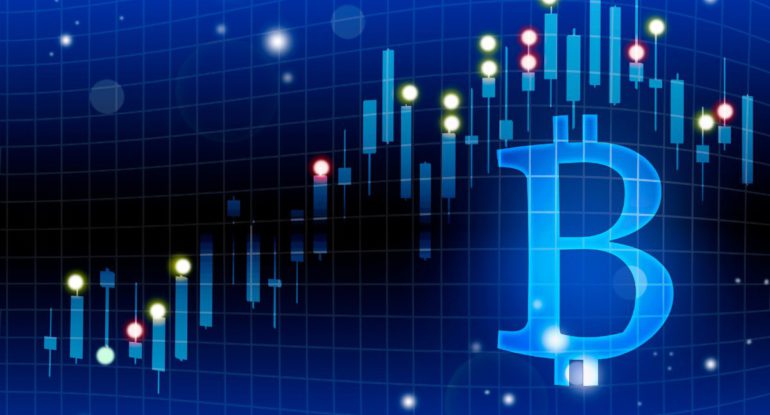March 13, 2024 by Diana Ambolis
659
As the Non-Fungible Token (NFT) market continues to capture the attention of collectors, investors, and enthusiasts alike, the debate over the most profitable strategy intensifies. One of the key decisions facing participants in the NFT space is whether to buy tokens during the minting phase or to wait and make purchases on the secondary market.
As the Non-Fungible Token (NFT) market continues to capture the attention of collectors, investors, and enthusiasts alike, the debate over the most profitable strategy intensifies. One of the key decisions facing participants in the NFT space is whether to buy tokens during the minting phase or to wait and make purchases on the secondary market. In this in-depth analysis, we will delve into the intricacies of both approaches Buying At Mint Vs. Secondary Market Strategies to determine which strategy holds the potential for greater profitability.
Buying at Mint: The Early Bird Advantage:

Decoding the profitability of buying NFTs at the Buying At Mint(initial release) involves understanding various factors that can influence the potential return on investment. Here’s a breakdown of key considerations:
- Artistic and Conceptual Value:
- Evaluate the artistic and conceptual value of the NFT. High-quality, unique, and conceptually rich artworks tend to attract more attention and demand over time.
- Artist Reputation:
- Consider the reputation of the artist or creator. Established and well-known artists often have a built-in fan base, increasing the likelihood of demand for their NFTs.
- Limited Editions and Rarity:
- Limited editions and rarity contribute to the value of NFTs. If an NFT is part of a limited collection or has unique attributes, it may become more valuable, especially if scarcity is emphasized.
- Community and Social Engagement:
- Examine the level of community and social engagement around the NFT project. A strong and active community can drive demand and interest, potentially increasing the value of the NFT.
- Utility and Additional Benefits:
- Some NFTs come with utility or additional benefits for holders, such as access to exclusive events, virtual goods, or governance rights. These features can enhance the long-term value of the NFT.
- Market Trends and Hype:
- Monitor current market trends and the overall hype around certain projects or artists. NFT markets can be influenced by trends, and participating in projects generating buzz may lead to profitable outcomes.
- Secondary Market History:
- Analyze the history of similar NFTs on the secondary market. Check if previous releases from the same artist or project have seen price appreciation over time.
- Early Investor Discounts:
- Some NFT projects offer early investor discounts or perks. Buying At Mint taking advantage of such opportunities can be beneficial if the project gains popularity and the value of the NFTs increases.
- Timing of Resale:
- Decide on the appropriate timing for resale. NFTs may experience price spikes shortly after the mint due to initial hype, but the market can also be unpredictable. Consider whether to sell immediately or hold for potential long-term gains.
- Transaction Costs:
- Be mindful of transaction costs, especially gas fees on blockchain networks like Ethereum. High transaction fees can impact the overall profitability of buying and selling NFTs.
- Legal and Licensing Considerations:
- Understand the legal aspects, especially if the NFT involves licensing or intellectual property rights. Some projects may have terms that affect the resale and commercial use of the NFT.
It’s crucial to approach NFT investments with caution and conduct thorough research before making buying decisions. While there have been success stories, the NFT market can be volatile, and profitability is not guaranteed. Diversifying investments and staying informed about market trends can help mitigate risks and increase the chances of a successful investment.
Decoding NFT Profitability through Secondary Market Strategies
Decoding NFT profitability through secondary market strategies involves understanding how various factors can influence the resale value of NFTs. Here’s a breakdown of key considerations for navigating the secondary market:
- Market Trends and Demand:
- Stay informed about current market trends and assess the overall demand for specific types of NFTs. Projects and artists that are currently popular may have a higher chance of resale success.
- Timing and Hype:
- Consider the timing of your resale. NFTs often experience increased demand right after the initial release of Buying At Mint However, timing can be crucial, and selling during periods of heightened hype may result in better returns.
- Community Engagement:
- Evaluate the strength of the community around the NFT project. A vibrant and engaged community can contribute to ongoing demand and interest in the secondary market.
- Limited Editions and Rarity:
- Highlight the limited editions and rarity of the NFT. Emphasize any unique attributes or scarcity that may increase the perceived value among potential buyers.
- Artist or Creator Influence:
- Leverage the influence of the artist or creator associated with the NFT. If the artist gains more recognition or popularity over time, it can positively impact the resale value of their earlier works.
- Marketing and Promotion:
- Invest in marketing and promotion for your NFT resale. Utilize social media, NFT communities, and other channels to create awareness and generate interest among potential buyers.
- Collaborations and Partnerships:
- Explore collaborations or partnerships with other NFT artists or projects. Joint releases or cross-promotions can attract a broader audience and increase the visibility of your NFT.
- Diversification:
- Diversify your NFT holdings. Owning a variety of NFTs from different projects or artists can spread the risk and increase the chances of finding profitable resale opportunities.
- Utility and Additional Benefits:
- If your NFT provides utility or additional benefits, such as access to exclusive events or virtual goods, highlight these features during resale to attract potential buyers.
- Research Previous Sales:
- Analyze the history of similar NFTs on the secondary market. Look at past sales data to understand how similar assets have performed over time and set realistic expectations for your resale.
- Engage with the Community:
- Actively engage with the NFT community. Participate in discussions, forums, and social media platforms related to NFTs to build relationships and increase the visibility of your NFTs.
- Manage Transaction Costs:
- Be mindful of transaction costs, including gas fees on blockchain networks. Consider the impact of fees on your overall profitability and factor them into your pricing strategy.
- Long-Term Holding vs. Short-Term Flipping:
- Decide on your strategy: whether to hold NFTs for the long term or engage in short-term flipping. Both approaches have their advantages, and your decision may depend on market conditions and your risk tolerance.
Remember that the NFT market can be dynamic and influenced by various factors. Staying informed, adapting to market trends, and actively participating in the NFT community can enhance your chances of successfully navigating the secondary market for profitable NFT resales.
Top 10 key differences between Buying at Mint vs. Secondary Market Strategies

Buying at the mint (initial release) and engaging in secondary market strategies involve different considerations and dynamics. Here are the top 10 key differences between buying at mint and secondary market strategies:
- Timing of Acquisition:
- Mint: Buying at the mint involves acquiring NFTs during their initial release. This is often when the project is launched or when a new collection is introduced.
- Secondary Market: Secondary market strategies involve purchasing NFTs that have already been released and are available for resale by other collectors.
- Initial Cost:
- Mint: Buying at the mint usually involves paying the initial cost set by the creator or project. This cost is typically lower than potential resale prices.
- Secondary Market: Purchasing in the secondary market may involve paying a premium over the original mint price, depending on factors like the project’s popularity and demand.
- Hype and Initial Demand:
- Mint: Buying At Mint NFTs often experience a surge in demand and hype during the minting phase, leading to potential quick sales and profits.
- Secondary Market: The initial hype may have subsided in the secondary market, and prices could be influenced by ongoing market trends and demand.
- Risk and Uncertainty:
- Mint: Buying at the mint involves a level of uncertainty about the NFT’s future value, as it depends on the success and popularity of the project over time.
- Secondary Market: Prices in the secondary market are influenced by historical data and market trends, providing more information for buyers to assess potential risks.
- Access to Exclusive Features:
- Mint: Minting often provides access to exclusive features or benefits, such as limited editions, early access to content, or other perks.
- Secondary Market: While secondary market NFTs may lack these initial perks, buyers can still assess the historical performance and utility of the NFT.
- Community Engagement:
- Mint: Engaging with the community during the mint can foster a sense of belonging and potentially lead to increased demand for the NFT.
- Secondary Market: Community engagement is still relevant, but the dynamics may differ as buyers focus on the NFT’s history and potential for future growth.
- Seller’s Perspective:
- Mint: Creators and initial sellers benefit directly from minting, earning revenue from the initial sales and potential royalties from future resales.
- Secondary Market: Sellers in the secondary market are typically collectors looking to profit from the appreciation of their NFTs.
- Immediate Ownership:
- Mint: Buying at the mint provides immediate ownership of the NFT, allowing collectors to showcase and trade their acquisitions right away.
- Secondary Market: Purchases in the secondary market also provide immediate ownership but may involve additional considerations like transfer fees.
- Market Conditions:
- Mint: Prices at the mint are influenced by the project’s launch, creator reputation, and initial demand.
- Secondary Market: Prices in the secondary market are influenced by ongoing market conditions, project developments, and the overall state of the NFT market.
- Transaction Fees:
- Mint: Transaction fees during the minting process, often called gas fees, can vary and impact the overall cost of acquiring NFTs.
- Secondary Market: Transaction fees may still apply but are generally lower than minting fees. Buyers should consider these fees when calculating potential profits or costs.
Both buying at the moment and engaging in secondary market strategies have their advantages and risks. Deciding between the two approaches depends on individual preferences, risk tolerance, and market conditions at the time of purchase.
Conclusion:
Determining the most profitable NFT strategy between buying at mint or on the secondary market depends on various factors, including individual risk tolerance, market knowledge, and project analysis. While early minting offers exclusive access and potential rarity, the secondary market provides a more nuanced and calculated approach. Successful NFT investors often employ a combination of both strategies, adapting to market conditions and project dynamics to optimize their returns in this ever-evolving digital landscape.































































